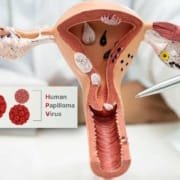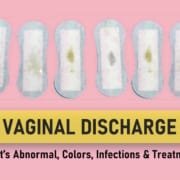What Is Cancer? Symptoms, Causes, Types & Treatment
According to the World Health Organization (WHO), one in five people globally will develop cancer during their lifetime. Current scientific evidence suggests that at least 40% of all cancer cases could be prevented with effective primary prevention measures, and early detection of tumors can further reduce mortality. This comprehensive guide aims to provide a clear overview of cancer, its symptoms, types, detection methods, treatments, and preventive measures.

What is Cancer?
Cancer is a complex disease where some of the body’s cells begin to grow uncontrollably and can spread to other parts of the body. Cancer can start almost anywhere in the human body, which is composed of trillions of cells. Under normal conditions, cells grow and divide to form new cells as needed. When cells become old or damaged, they die, and new cells replace them. This process is known as cell division. Sometimes, this orderly process goes awry. Abnormal or damaged cells may begin to grow and multiply when they shouldn’t. These cells can form masses of tissue called tumors. Tumors can be either cancerous (malignant) or non-cancerous (benign).
Cancerous Tumors. Cancerous tumors have the ability to invade nearby tissues and spread to distant parts of the body, a process known as metastasis. These malignant tumors can create new tumors in other areas, making them particularly dangerous. Many cancers form solid tumors, although blood cancers, like leukemias, typically do not form solid masses.
Benign Tumors. In contrast, benign tumors do not spread to other parts of the body or invade nearby tissues. When benign tumors are removed, they usually do not grow back. However, benign tumors can sometimes become quite large and may cause serious health issues, especially if they are located in sensitive areas like the brain. Despite being non-cancerous, benign tumors can still pose significant health risks.
Types of Cancer
There are over 100 types of cancer, each named for the location where they originate and the type of cell they consist of, regardless of whether they spread to other parts of the body. For instance, cancer that starts in the lungs but spreads to the liver is still referred to as lung cancer.
General Types of Cancer
Several clinical terms describe broad categories of cancer:
- Carcinoma: Cancer that begins in the skin or the tissues lining other organs.
- Sarcoma: Cancer of connective tissues such as bones, muscles, cartilage, and blood vessels.
- Leukemia: Cancer originating in the bone marrow, which produces blood cells.
- Lymphoma and Myeloma: Cancers of the immune system.
Common Types of Cancer
- Lung Cancer: Includes non-small cell lung cancer and small cell lung cancer.
- Breast Cancer: Primarily affects women , though men can also develop it.
- Prostate Cancer: Affects the prostate gland in men.
- Colorectal Cancer: Involves the colon or rectum, parts of the digestive system.
- Blood Cancer: Includes leukemia and lymphoma, which affect the blood and lymphatic systems.
- Skin Cancer: Begins in skin cells and typically causes unusual growth or changes on the skin.
How Common is Cancer?
The incidence of cancer varies based on factors such as age, gender, race, environmental influences, diet, and genetics. The World Health Organization (WHO) provides insights into the global prevalence of cancer:
- Global Leading Cause of Death: Cancer accounts for approximately 8.2 million deaths, representing around 22% of all non-communicable disease-related deaths.
- Most Deadly Cancers: Lung, stomach, liver, colon, and breast cancers cause the highest number of cancer deaths annually.
- Rising Death Toll: Cancer-related deaths are projected to increase to 13.1 million by 2030, marking a 70% rise.
- Regional Variations: Cancer prevalence can vary significantly by region due to a combination of environmental and genetic factors. For example, stomach cancer is more common in Japan but rare in the U.S.
Signs and Symptoms of Cancer
Cancer symptoms can be subtle and easily mistaken for less serious conditions. Cancer symptoms also vary depending on the type of cancer, its location, and whether it has spread to other parts of the body. For instance, breast cancer might manifest as a lump in the breast or nipple discharge, while metastatic breast cancer might cause bone pain, extreme fatigue (if spread to the lungs), or seizures (if spread to the brain). In some cases, there may be no symptoms until the cancer is in an advanced stage.
The American Cancer Society identifies seven warning signs that should prompt medical attention, remembered with the acronym CAUTION:
- Change in bowel or bladder habits
- A sore throat that does not heal
- Unusual bleeding or discharge (e.g., nipple discharge or a non-healing sore that oozes)
- Thickening or lump in the breast, testicles, or elsewhere
- Indigestion (usually chronic) or difficulty swallowing
- Obvious change in the size, color, shape, or thickness of a wart or mole
- Nagging cough or hoarseness
Other signs and symptoms that may indicate cancer include:
- Unexplained weight loss or loss of appetite
- New or unusual pain in the bones or other parts of the body
- Persistent fatigue, nausea, or vomiting
- Unexplained low-grade fevers, persistent or intermittent
- Recurring infections that do not respond to usual treatment
Anyone experiencing these symptoms should consult a doctor, as they can also arise from noncancerous conditions.
While many cancers share general symptoms, they often have more specific symptoms based on the cancer type. For example, lung cancer might cause chest pain, unusual bleeding when coughing, and shortness of breath leading to fatigue.
Information for High-Risk Individuals
People with a higher risk of cancer should be particularly vigilant for symptoms. This includes individuals with:
- Diagnosed conditions that increase cancer risk
- A family history of cancer, especially if two or more close relatives (parent, sibling) have had cancer
Cancer Causes and Risk Factors
Cancer is fundamentally a genetic disorder caused by mutations in genes that regulate cell behavior. While some genetic mutations are inherited, most are acquired over a person’s lifetime due to various risk factors:
- Smoking: Increases the risk of lung, pancreatic, esophageal, and oral cancers.
- Diet: High-fat and high-sugar diets, coupled with lack of exercise, can elevate cancer risk.
- Environmental Exposure: Toxins like asbestos, pesticides, and radon are known carcinogens.
- Radiation: UV radiation from the sun and excessive radiation therapy can lead to skin and other cancers.
- Hormone Therapy: Certain hormone treatments can increase the risk of cancers such as breast and endometrial cancer.
Cancer Prevention
Cancer is a major global health challenge, but a significant portion of cancer deaths between 30% and 50% can be prevented. By modifying or avoiding key risk factors and implementing proven prevention strategies, we can reduce the cancer burden. Additionally, early detection and proper management of cancer patients can further decrease cancer-related deaths. Prevention is not only effective but also the most cost-efficient long-term strategy for cancer control.
Modifying or avoiding the following key risk factors can help prevent cancer:
- Avoid Tobacco Use: Avoiding all forms of tobacco significantly reduces the risk of various cancers, including lung, mouth, throat, and pancreatic cancer
- Maintain a Healthy Weight: Keeping a healthy weight through balanced eating and regular physical activity can lower the risk of several cancers, including breast, prostate, lung, colon, and kidney cancer.
- Eat a Healthy Diet: Consuming a diet rich in fruits, vegetables, and whole grains can provide essential nutrients and antioxidants that help protect against cancer.
- Exercise Regularly: Regular exercise helps maintain a healthy weight and reduces the risk of breast, colon, and other cancers.
- Limit Alcohol Use: Limiting alcohol intake can lower the risk of cancers of the mouth, throat, esophagus, liver, colon, and breast.
- Practice Safe Sex: Safe sex practices reduce the risk of sexually transmitted infections (STIs) like human papillomavirus (HPV), which can lead to cervical and other cancers.
- Get Vaccinated: Vaccinations against hepatitis B and HPV can prevent liver and cervical cancers, respectively.
- Reduce Exposure to Ultraviolet (UV) Radiation: Protecting your skin from UV radiation by using sunscreen, wearing protective clothing, and avoiding tanning beds reduces the risk of skin cancer.
- Prevent Unnecessary Ionizing Radiation Exposure: Minimize occupational exposure to ionizing radiation and ensure safe and appropriate medical use of radiation in diagnosis and treatment.
- Avoid Air Pollution: Reducing exposure to urban air pollution and indoor smoke from household use of solid fuels can lower the risk of lung and other cancers.
- Get Regular Medical Care: Routine medical care allows for early detection and treatment of precancerous conditions and early-stage cancers, improving outcomes.
- Manage Chronic Infections: Certain chronic infections, such as those caused by Helicobacter pylori, hepatitis B and C, and HPV, are linked to cancer. Addressing these infections, particularly in low- and middle-income countries, can significantly reduce cancer risk.
Cancer Diagnosis and Testing
Diagnosing cancer typically begins with a thorough physical examination and a review of your medical history. From there, healthcare providers may use a variety of tests:
- Blood Tests: Includes complete blood counts, tumor markers, blood protein tests, and circulating tumor cell tests.
- Imaging Tests: Techniques such as CT scans, X-rays, PET scans, ultrasounds, and MRIs help locate and assess the extent of cancer.
- Biopsies: Involves removing cells, tissues, or fluids for microscopic examination. Types of biopsies include needle biopsy, skin biopsy, bone marrow biopsy, endoscopic or laparoscopic biopsy, and surgical biopsies.
- Genetic Testing: Identifies specific gene mutations associated with cancer, aiding in diagnosis and treatment planning.
What is Cancer Staging?
Cancer staging is a crucial step in planning treatment and understanding the prognosis, or expected outcome, for someone diagnosed with cancer. Healthcare providers use a staging system to determine how far cancer has spread and to design the most effective treatment strategy. The TNM system is the most commonly used cancer staging method:
- T (Tumor): Refers to the size and extent of the primary tumor.
- N (Nodes): Indicates whether the cancer has spread to nearby lymph nodes.
- M (Metastasis): Shows if the cancer has spread to other parts of the body.
The Four Stages of Cancer
Most cancers are categorized into four stages, based on the size and location of the tumor, and whether it has spread to lymph nodes or other parts of the body. Here is a breakdown of these stages:
Stage I: Localized Cancer
- Characteristics: The cancer is confined to a small area and has not spread to lymph nodes or other tissues.
- Prognosis: Often, cancers detected at this stage are highly treatable and may be removed with surgery or treated with localized therapies.
Stage II: Larger Tumor, No Spread
- Characteristics: The cancer has grown larger but has not yet spread to lymph nodes or other tissues.
- Prognosis: Treatment might involve surgery, radiation, or chemotherapy, aiming to remove or reduce the tumor.
Stage III: Regional Spread
- Characteristics: The cancer has grown even larger and may have spread to nearby lymph nodes or tissues.
- Prognosis: This stage often requires more aggressive treatment, which may include a combination of surgery, radiation, and chemotherapy.
Stage IV: Metastatic Cancer
- Characteristics: The cancer has spread to other organs or distant parts of the body.
- Prognosis: Known as advanced or metastatic cancer, this stage requires comprehensive treatment approaches to manage symptoms and slow the disease’s progression.
Stage 0: Pre-Cancerous
- Characteristics: This is the earliest stage of cancer, where abnormal cells are present but have not spread.
- Prognosis: Stage 0 cancers are often highly treatable, as they are localized and can usually be removed completely.
Cancer Treatment Options
Treatment plans are tailored to each individual based on the type, stage, and location of cancer, as well as the patient’s overall health. Common treatments include:
- Chemotherapy: Uses powerful drugs to kill cancer cells, administered orally or intravenously.
- Radiation Therapy: Uses high doses of radiation to destroy cancer cells, often combined with chemotherapy.
- Surgery: Removes cancerous tumors and may be combined with other treatments to shrink tumors before surgery or eliminate remaining cancer cells afterward.
- Hormone Therapy: Blocks cancer-promoting hormones, particularly in cancers like prostate and breast cancer.
- Biological Response Modifier Therapy: Enhances the immune system’s ability to fight cancer.
- Immunotherapy: Boosts the immune system to recognize and destroy cancer cells.
- Targeted Therapy: Focuses on specific genetic mutations driving the cancer.
- Bone Marrow Transplant: Replaces damaged bone marrow with healthy stem cells.
Managing Side Effects
Cancer treatments often come with side effects such as anemia, nausea, vomiting, fatigue, and pain. Palliative care can help manage these symptoms and improve quality of life.
Prognosis and Living with Cancer
Cancer Prognosis
Prognosis depends on various factors, including overall health, type and stage of cancer, and response to treatment. Healthcare providers can offer a personalized prognosis based on these factors.
Cancer Survival Rates
Survival rates vary by cancer type and stage. According to the National Cancer Institute, about 68% of people diagnosed with cancer survive for at least five years.
Living with Cancer
Living with cancer involves self-care and support. Establishing healthy eating and exercise habits, resting as needed, and seeking mental health support can help manage the challenges of chronic illness.
Cancer Survivorship
Cancer survivorship starts from the day of diagnosis and continues throughout life. Survivors may face challenges such as recurrent cancer, second cancers, chronic fatigue, pain, and cognitive issues like “chemo brain.”
When to See Your Healthcare Provider
It’s important to stay in touch with your healthcare team during and after treatment. Contact them if you experience symptoms like fever, severe headaches, chills, persistent cough, shortness of breath, mouth sores, significant weight loss, excessive vomiting, blood in urine or stool, or unusual bleeding or bruising.
Questions to Ask Your Healthcare Provider
Understanding your condition and treatment options is crucial. Here are some questions to consider:
- What type of cancer do I have?
- Has the cancer spread?
- Is my cancer genetic?
- What are my survival chances?
- What treatments do you recommend?
- What are the treatment risks and benefits?
- How long will treatment last?
- Can I work during treatment?
- Will treatment affect my fertility?
- Should I consider a clinical trial?
Conclusion
Navigating a cancer diagnosis and treatment can be overwhelming, but being informed and proactive about your health can make a significant difference. Regular communication with your healthcare team, adopting a healthy lifestyle, and seeking support when needed are key components in managing and overcoming cancer. Remember, every individual’s journey with cancer is unique, and advances in medical research continue to improve outcomes and provide hope for those affected.










